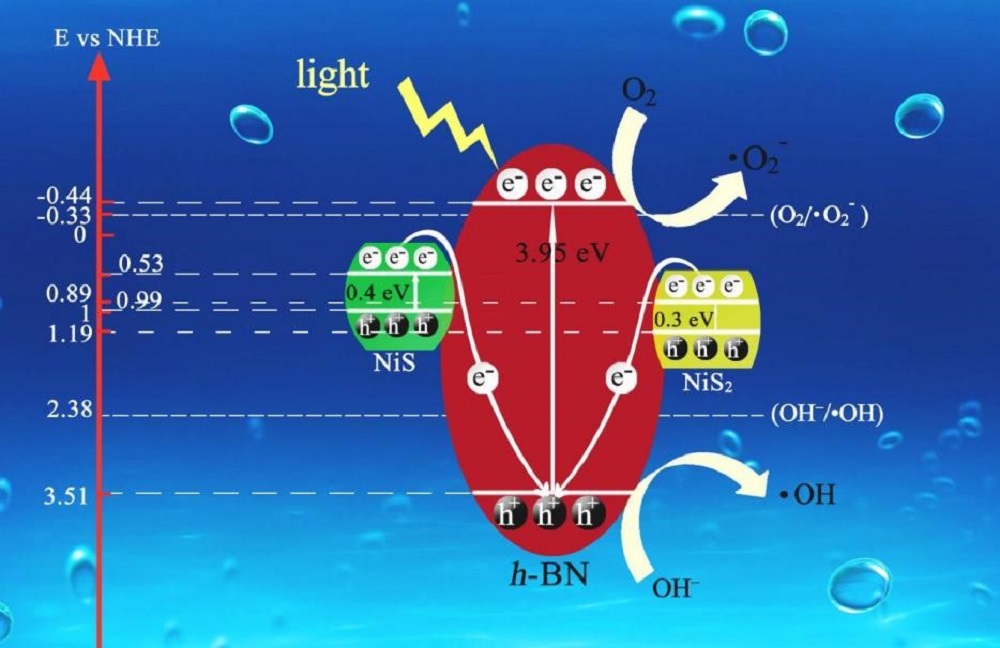With respect to the above experiments and discussion, in Fig. 9, a reasonable mechanism is illustrated for eliminating Cr (VI) and RhB. First, DRS analysis indicated that 7 wt-%
h-BN/NiS
2/NiS displayed a wider absorption range compared with the NiS
2/NiS nanocrystals in harvesting light. Second, graphene-like
h-BN improved the photocatalytic performance of NiS
2/NiS nanocrystals, and this can be attributed to the interfacial charge transfer along the double Z-scheme route. According to the literature, the NiS
2 had a conduction band (CB) potential of 0.89 V (
vs. NHE) and a valence band (VB) potential of 1.19 V (
vs. NHE), the CB and VB values of NiS were 0.53 and 0.99 V in potential
vs. NHE, respectively. Therefore, the band gaps of NiS and NiS
2 were 0.4 and 0.3 eV, respectively [
37,
48]. For
h-BN, the CB potential of
h-BN (–0.44 eV) was a negativity greater than −0.33 eV in terms of the O
2/•O
2− reduction potential, and the VB potential of
h-BN (3.51 eV) was greater than the oxidation potential of OH
−/•OH (2.38 eV). Further, the actual valence/conduction band energies of samples were tested (Fig. S1 and Fig. S2, cf. Electronic Supplementary Material). When the 7 wt-%
h-BN/NiS
2/NiS photocatalyst was irradiated, the photoinduced electrons in NiS and NiS
2 were excited and rapidly transferred from VB to CB. The electrons in the CB of NiS
2 and NiS recombined with some of the holes in the VB of
h-BN, forming a double Z-scheme heterojunction. The remaining holes could combine with OH
− on the surface of
h-BN to form •OH (
Eθ(OH
−/•OH) = 2.38 eV), while adsorbed O
2 was reduced to •O
2− (
Eθ (O
2/•O
2−) = –0.33 eV) by electrons in the VB of
h-BN [
49]. Then, the RhB could also be oxidized by •O
2− and •OH to many small molecules (H
2O and CO
2). It has been demonstrated that the double Z-scheme heterostructure between NiS
2/NiS nanocrystals and
h-BN effectively separated electrons in the CB of
h-BN. Therefore, the graphene-like
h-BN supported NiS
2/NiS nanocrystals can provide more photogenerated electrons and holes for enhancing the photocatalytic activity in removing RhB and Cr(VI).













